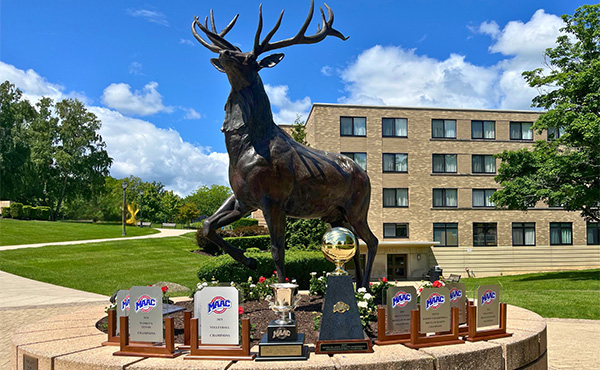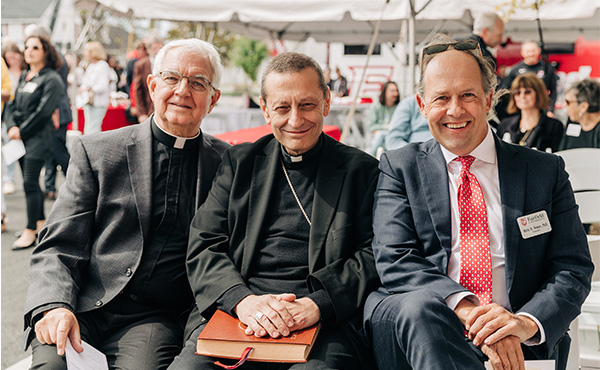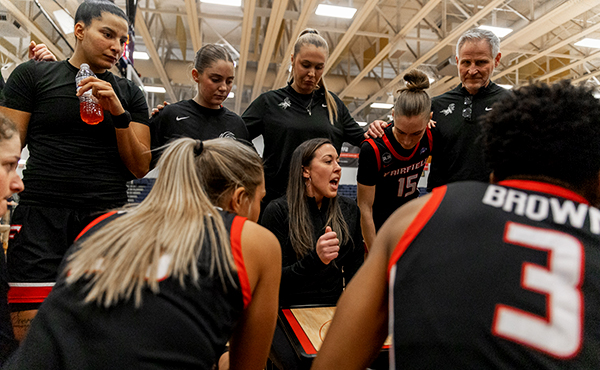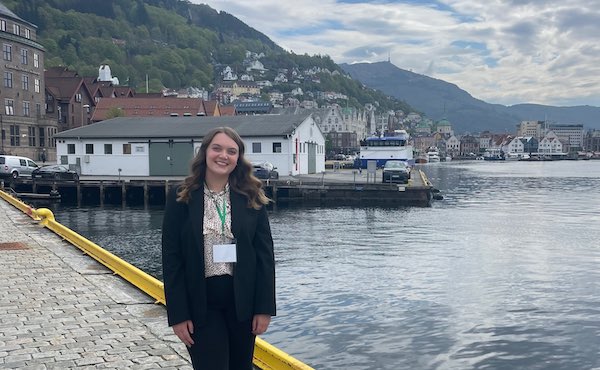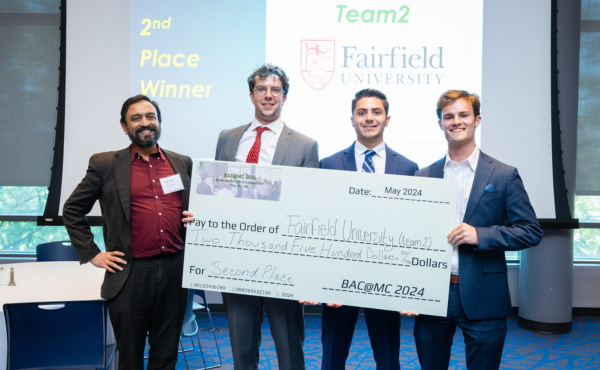Associate professor of mechanical engineering Dr. Sundarram conducts research involving triply periodic minimal surface structures.
Research being done by Sriharsha Sundarram, PhD, involves triply periodic minimal surface (TPMS) structures: lightweight yet mechanically strong materials that have garnered attention across industries seeking greater energy efficiency and lightweight designs.
Dr. Sundarram, the Brinkman Family associate professor of mechanical engineering, traveled to Spain and France this summer on a two-fold mission: to establish research and study abroad collaborations with faculty and students from the Jesuit Instituto Químico de Sarría (IQS) in Barcelona and the Institut Catholique D’Arts et Métiers (ICAM) in France, and to present his research on TPMS structures at the second ICAM International Days conference in Toulouse.
IQS has recently become a study abroad partner for the School of Engineering and Computing. The school is creating a master’s level program, and Dr. Sundarram expects that some of those students will come to Fairfield to complete their research and thesis work. While in France, he met with faculty from other universities, hoping to establish research collaborations with engineers also working on TPMS structures.

The School of Engineering and Computing recently procured a metal 3D printer, Rapidia Conflux, to support faculty research. The new printer utilizes a water-based metal paste to print green parts that are sintered in a furnace. This eliminates toxic chemicals and fumes, making it an environmentally friendly process. In addition, the procedure is fast, creating metal parts in less than 24 hours.
“There are a lot of people working on these structures, which are highly porous but at the same time have good mechanical properties,” explained Dr. Sundarram.
TPMS structures mimic the porosity and strength found in natural materials, such as bones, woods, and corals. They exhibit good performance when used as a filter or as a heat exchanger, because they have a large and smooth surface area.
The structures themselves are defined by mathematical equations, which made them impossible to manufacture in the past. With the advent of 3D printing, they can be lab-manufactured using plastics, polymers, or metals. They can even be made with composite materials — glass fiber mixed with plastic, for example – to make them even stronger. TPMS structures made of metal or composites can be used for the outer shells of planes.
“For our research, we focused on TPMS structures with energy-absorbing abilities,” said Dr. Sundarram. “These strong, lightweight structures have potential applications for the bumpers of automobiles or for use in aerospace.”
Mechanical engineering grad students Shaun Ormiston MS’23 and Dylan Weber ’21, MS’22 spent many hours in the lab under Dr. Sundarram’s guidance. Weber, who currently works as an airframe design engineer at Boeing in Los Angeles, said that the aim of their graduate lab research was “the application of mathematical equations to generate solid models, and figuring out how to fabricate the structures using additive manufacturing [3D printing].”
Once fabricated, the students tested their structures and ran analyses to determine the mechanical properties. “We grabbed those data points and formed graphs to help visualize the behavior of their properties,” said Weber. “We could then take that data and infer various applications in the aerospace and automotive industries.”
“We found that using a foaming technique in the manufacturing process made our prototypes more porous and therefore lighter,” Dr. Sundarram said. “However, they can still withstand a great deal of load, so they can replace a solid material.”
Since lighter cars and planes are more fuel efficient, these structures could be game changers.
Dr. Sundarram and his students have had their work published in Polymer Engineering and Science, and in Polymer Composites. This past summer, the engineering professor received a grant from the NASA Connecticut Space Consortium to study the effectiveness of TPMS structures for space vehicles, with a focus on thermal protection for spacecraft as they reenter the earth’s atmosphere.”

